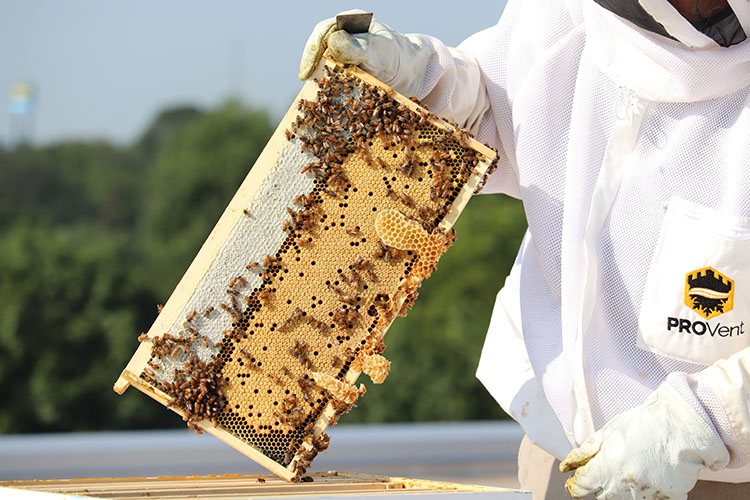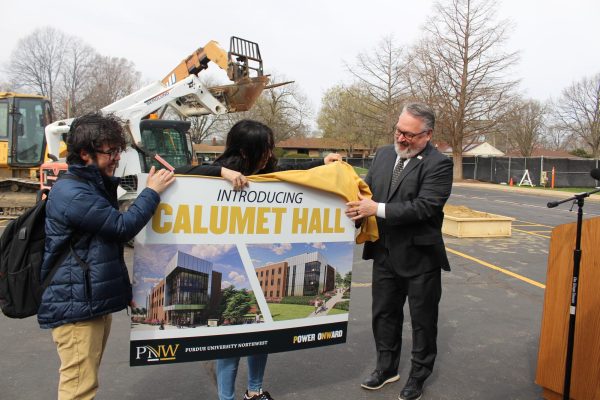Hives continue to thrive as PNW supports regional sustainability
For John Bachman, tending to PNW’s beehives is personal.
“I have interacted with bees from a very early age, and have always been fascinated by them,” said Bachman, the university’s senior grounds and landscape manager, who also is responsible for PNW’s beehives.
“I have always wanted to bring honeybees to this campus and welcomed the opportunity,” he said. “I am so excited to have the chance to have both honeybees and our native bees that are huge pollinators of crops.”
Bachmann studied beekeeping at what is now Purdue Northwest’s Westville campus. He recognizes how important bees are to farmers.
“If we lose these pollinators we lose out on many foods and plants, the loss of those plants can hurt our animals, and these losses continue to travel up the food chain,” he said. “I spoke with Provost Chris Holford, he was interested in educating students about urban farming and sustainability.”
During this, their second year on campus, the PNW bees produced 650 pounds of honey.
Bachmann said the university’s Pride Gold Honey is harvested from PNW’s four bee yards: The roof of the Nils K. Nelson Bioscience Innovation Building in Hammond, which has three hives; an area near the PNW sign along the Borman expressway, which has five hives; the Westville campus, which has three hives, and the Gabis Arboretum, which has two hives.
The honey is packaged in 8-ounce jars.
“This is bottled at the HTM kitchen by student volunteers from the Honors College,” he said. “Because we bottle our honey in our HTM-certified kitchen, no inspection is required.”
Bachmann hopes to get more students, faculty and staff participate in the process next year. It can get pretty involved.
“We wrap the hives in roofing paper,” he said. “We leave two [beehive boxes] full of honey and the bees, then we place a two-gallon feeder above the deeps for some extra reserves,” he said. “We are always working to combat our losses of the hives in the winter.
“Every beekeeper has a different method for winterizing their hives,” said Bachmann. “We used this method last year and it worked. We are hoping for similar results this year.”
Anyone interested in checking on the bees can click on the Purdue University Northwest Bee Cam on YouTube.





